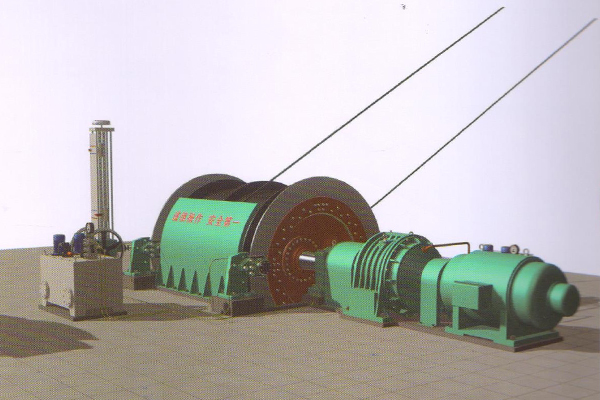How to deal with common faults of mining elevators?

The common troubleshooting methods for mining elevators are as follows:
1. Oil leakage and unstable oil pressure: After long-term use, there is a large amount of leakage between the various oil collection circuits in the safety braking device, as well as between the valve and the oil collection circuit, and the decrease in oil pressure causes the valve to be unable to be opened. The reason is that the screws between them are loose, and tightening the screws can eliminate the fault; The reason for unstable oil pressure is the mixing of air in the hydraulic system, which should be eliminated, or the current filtering of the coil of the electro-hydraulic pressure regulating device is not good, causing the coil to vibrate up and down, resulting in unstable oil pressure. An electrolytic capacitor should be installed to strengthen filtering.
2. The oil pressure value cannot be guaranteed: the reason is that there is air suction in the system, the oil in the oil tank has a lot of foam, or the leakage in the overflow valve and the electromagnetic reversing valve is large. The treatment method: check whether the oil suction port of the oil pump leaks; Is the pipe joint at the oil pump suction tightened; Are the screws of the oil suction filter tightened; Check if there is any air leakage in the pipeline from the oil suction filter to the oil pump suction port; Check if the oil pump end cover screws are tightened; Clean the overflow valve core. If the core is not flexible inside the valve body, you can hold it by hand and grind it back and forth inside the body; Clean the valve core of the electromagnetic directional valve, requiring the valve core to move flexibly inside the valve body to ensure that the valve core is in place during operation.
3. If the feed flow rate of the elevator exceeds the conveying capacity and there is a large piece of material entering the machine base, immediately stop the machine and close the material door to troubleshoot the cause. Open the lower insertion plate of the machine base, and after releasing the blocked material, restart according to the elevator operating procedure.
4. Reduced conveying capacity: The uneven speed is caused by slipping of the transmission belt and lifting belt, insufficient motor speed, uneven feeding, severe material return, and unreasonable selection of the bucket form. By inspecting the motor, adjusting the tensioning device, troubleshooting, and feeding evenly, identify the cause and discharge the material in a timely manner. Reasonably select bearings with excessive dust accumulation, poor lubrication, damaged bearings, or lifting belts that are too tight, excessive material return, and blocked machine seats. The elimination method is to readjust, clean or replace the lubricating oil, replace the bearings, and adjust them appropriately.
5. Machine seat blockage: The elevator feeds before starting, the tension of the bucket belt is insufficient and slips, the elevator feed flow exceeds the conveying capacity, and large pieces of material enter the machine seat. The elimination method is to adjust the spindle speed, modify the external dimensions of the machine head, or adjust the gap between the flow plate and the dustbin, and clear the discharge port.
6. The casing is severely worn and the power consumption is excessive: the reason is that the bearing installation is skewed, the bearing accumulates a lot of dust, the lubrication is poor, the bearing is damaged or the lifting belt is too tight, there is too much return material, and the machine seat is blocked.
News and information
Latest news- 282024.03
Iranian clients come to the company to negotiate cooperation
- 022023.11
What environment is suitable for mining elevators and how to improve the safety of mining elevators
- 022023.11
What are the advantages of a drilling wheel and where can it be used
- 022023.11
How to deal with common faults of mining elevators?
- 022023.11
What are the differences between scheduling winches and mining hoisting winches
- 022023.11
Why is a belt conveyor suitable for transporting coal


